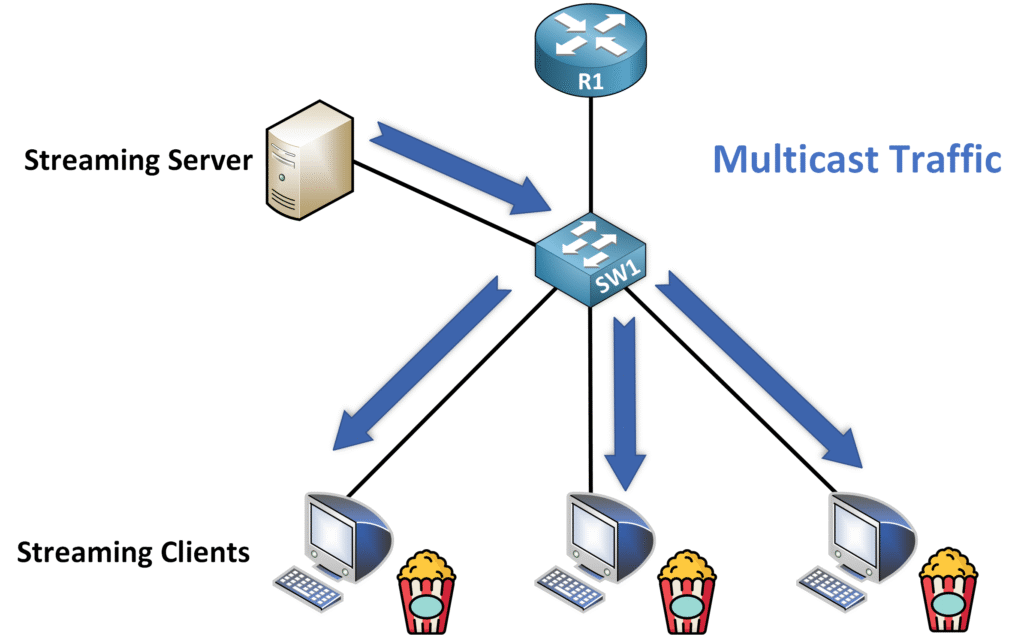Types of Network Traffic
1. Unicast Traffic
Definition
Unicast traffic refers to communication between a single sender and a single receiver. It is the most common type of network communication and is fundamental for understanding point-to-point interactions such as accessing a web server.
Characteristics

- One-to-One Communication: Data is sent directly from one device (a computer) to another specific device (a web server).
- Unique Destination Address: Packets are addressed using the receiver’s unique IP address, ensuring only the intended device processes them.
- Direct Path: Data flows exclusively between the sender and receiver, avoiding duplication.
Example: Accessing a Website: When a user types a URL in their browser, their device sends a unicast request to the web server hosting the site. The server responds directly to the user’s device with the requested content.
2. Broadcast Traffic
Definition
Broadcast traffic is sent from one device to all devices in the same network segment. It is used when a sender needs to communicate with every device in the broadcast domain.
Characteristics

- One-to-All Communication: Data is transmitted to all devices within the same broadcast domain, regardless of whether they need it.
- Restricted to the Subnet: Broadcast traffic is limited to devices in the local network and does not traverse routers.
- Network Overhead: Excessive broadcast traffic can lead to congestion, especially in large networks.
- No Return to Sender: When broadcast traffic passes through a switch, it is forwarded to all devices in the broadcast domain except the sender. The traffic does not loop back to the originating device, avoiding unnecessary duplication and feedback.
Example
- Address Resolution Protocol (ARP): A device sends a broadcast request to discover the MAC address of another device on the local network. For example, if PC1 needs to send data to PC2, it will first broadcast an ARP request asking, “Who has this IP address?” All devices receive the request, but only PC2 responds.
- DHCP Discovery: When a device connects to a network and needs an IP address, it broadcasts a DHCP Discover message. All devices in the broadcast domain receive it, but only the DHCP server responds.
3. Multicast Traffic
Definition
Multicast traffic is used for one-to-many communication where a sender (e.g., a streaming server) transmits data to a specific group of devices (e.g., clients) that have joined a multicast group. This mechanism ensures efficient delivery of the same content to multiple recipients without duplicating packets unnecessarily.
Characteristics

- Group Communication: Devices (clients) interested in receiving the data join a multicast group, identified by a multicast IP address (e.g.,
224.1.1.1). - Efficient Bandwidth Usage: A single stream of data is sent to the multicast group, reducing network load compared to unicast traffic that would require multiple streams.
- Managed Participation: Protocols like IGMP (Internet Group Management Protocol) are used by clients to signal their interest in joining the multicast group.
Example
Streaming Server and Clients Scenario:
- A streaming server sends a live video lecture to the multicast group address
224.1.1.1. - Devices (clients) that have subscribed to this group receive the video stream.
- Unsubscribed devices do not receive the traffic, optimizing bandwidth usage.
